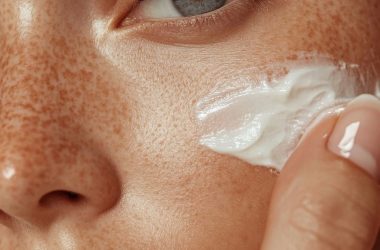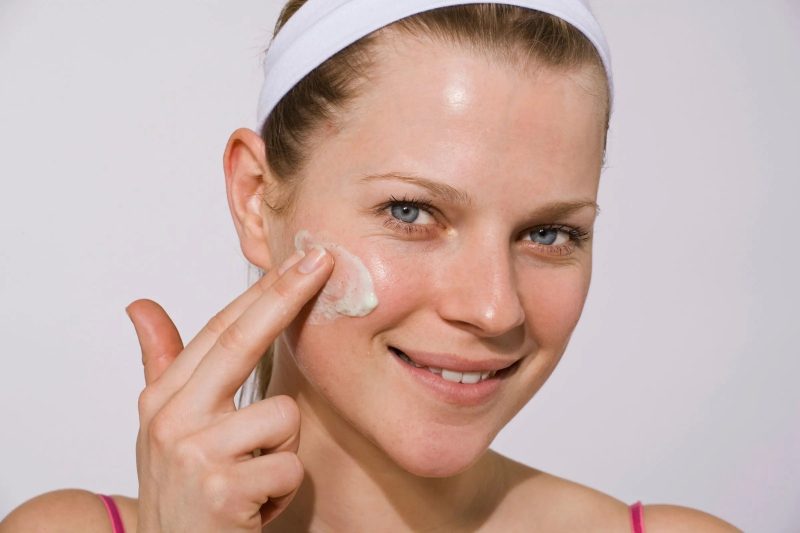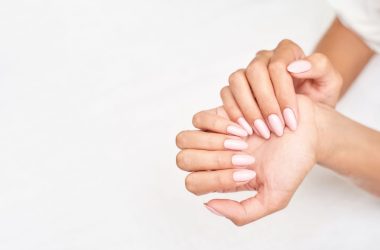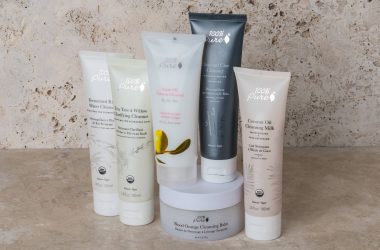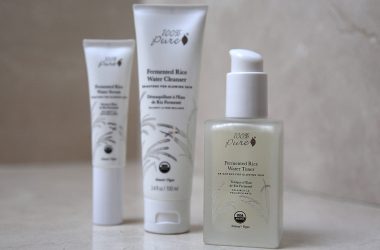From Lightweight Hydrators to Intensive Repair Creams: Your Complete Guide to Finding the Perfect Match for Your Dry Skin Needs
Posted on June 16, 2025 Written by: 100% PURE®

Dry skin doesn’t discriminate—it can affect anyone, anywhere, at any time. Whether you’re dealing with seasonal dryness, aging-related moisture loss, or chronic dehydration, finding the right moisturizer can transform your skin from tight and flaky to smooth and supple. Here’s your definitive ranking of what actually works for different types of dry skin.
Why Most People Get Dry Skin Moisturizers Wrong
The skincare aisle is packed with products promising to solve dry skin, yet millions of people continue struggling with tightness, flaking, and discomfort despite using moisturizer daily. The problem isn’t that these people aren’t trying—it’s that they’re often using the wrong approach for their specific type of dryness.
Many people assume all dry skin is the same and needs the same solution: a heavy, thick cream. While this approach works for some, it can actually worsen certain types of dryness or create new problems like clogged pores or an uncomfortable greasy feeling. Understanding that dry skin has many different causes and manifestations is the first step to finding effective treatment.
The confusion often starts with product marketing that focuses on texture rather than ingredients or mechanisms of action. A cream that feels rich and luxurious in the jar might contain ingredients that provide only temporary relief, while a lighter-feeling product with superior ingredients could provide lasting hydration and skin barrier repair.
Another common mistake is treating dry skin as a standalone issue rather than considering the underlying causes. Dry skin can result from environmental factors, aging, genetics, over-exfoliation, harsh products, medical conditions, or lifestyle factors. Each cause requires a slightly different approach to achieve optimal results.
Many people also fail to consider that their moisturizer needs may change with seasons, age, hormonal fluctuations, or life circumstances. A product that works perfectly in summer might be inadequate for winter dryness, while a moisturizer that was perfect in your twenties might not address the changing needs of mature skin.
The goal isn’t just to add moisture to the surface of your skin—it’s to restore and maintain your skin’s natural moisture barrier, address underlying causes of dryness, and create lasting hydration that keeps your skin comfortable and healthy throughout the day.

Understanding Different Types of Dry Skin
Not all dry skin is created equal, and understanding your specific type of dryness is crucial for choosing the most effective treatment approach. Each type has different characteristics, causes, and optimal treatment strategies.
Dehydrated Skin vs. Dry Skin True dry skin lacks oil production due to underactive sebaceous glands, genetics, or aging. This type of skin feels tight, may appear flaky, and often has a rough texture. It needs products that provide both water and oil components to restore balance.
Dehydrated skin, on the other hand, lacks water but may still produce adequate oil. This skin type can feel tight and look dull but might also experience breakouts. Dehydrated skin needs water-based hydration and ingredients that help retain moisture rather than heavy, oil-based products.
Aging-Related Dryness As we age, skin produces less sebum and loses its ability to retain moisture effectively. This type of dryness often comes with additional concerns like fine lines, loss of elasticity, and uneven texture. It requires moisturizers that provide intensive hydration while supporting skin structure and repair.
Products like Restorative Sea Culture Extra Riche Créme are specifically formulated to address aging-related dryness with rich, nourishing ingredients that provide both immediate comfort and long-term skin improvement.
Environmental Dryness External factors like cold weather, low humidity, air conditioning, heating, or sun exposure can strip moisture from even normally balanced skin. This type of dryness is often temporary but can become chronic if not properly addressed.
Environmental dryness typically responds well to barrier-repairing ingredients and protective formulations that shield skin from continued moisture loss while replenishing what’s been depleted.
Compromised Barrier Dryness Over-exfoliation, harsh products, or skin conditions can damage the skin’s protective barrier, leading to increased water loss and sensitivity. This type of dryness often comes with irritation, redness, or burning sensations.
Barrier-compromised skin needs gentle, reparative ingredients that rebuild the protective layer without causing additional irritation. Heavy fragrances, acids, or aggressive ingredients can worsen this condition.
Combination Dry Skin Many people experience dryness in some areas while having normal or even oily skin in others. This creates the challenge of needing different products or approaches for different areas of the face.
Understanding your skin’s patterns helps you customize your approach, perhaps using a lighter moisturizer like Hydra Drench Cream on less dry areas while applying more intensive treatments to particularly dry zones.
The Science of What Makes Moisturizers Actually Work
Effective moisturizers work through three primary mechanisms: humectants that attract moisture, emollients that smooth and soften, and occlusives that prevent water loss. Understanding these categories helps explain why some products work better for certain types of dryness.
Humectants: Drawing Moisture In Humectants like hyaluronic acid, glycerin, and sodium PCA attract water from the environment and deeper layers of skin to the surface. These ingredients are crucial for adding hydration but need to be balanced with other components to prevent them from actually drawing moisture out of skin in very dry environments.
Humectant-rich products work particularly well for dehydrated skin and in humid climates. They provide the water component that dry skin needs while feeling lightweight and comfortable under makeup or other products.
Emollients: Smoothing and Softening Emollients fill in the gaps between skin cells, creating a smoother surface and improving texture. Ingredients like jojoba oil for skin, squalane, and various plant oils fall into this category. They’re essential for addressing the rough, flaky texture that often accompanies dry skin.
The Intensive Nourishing Facial Oil exemplifies how emollient-rich formulations can transform dry, rough skin into smooth, supple skin by providing the lipid components that dry skin lacks.
Occlusives: Locking Moisture In Occlusives create a protective barrier on the skin’s surface that prevents trans-epidermal water loss. Ingredients like shea butter, ceramides, and various waxes provide this protective function. They’re particularly important for maintaining hydration throughout the day and overnight.
The most effective moisturizers combine all three mechanisms in balanced formulations that address immediate comfort while providing lasting hydration and skin barrier support.
Active Ingredients for Enhanced Benefits Beyond basic moisturizing, some dry skin benefits from active ingredients that address underlying issues. Vitamin C provides antioxidant protection while supporting collagen production, making it valuable for aging-related dryness.
Using a vitamin c serum like the Vitamin C Serum under your moisturizer can enhance hydration while providing additional skin benefits. The antioxidant protection helps prevent further damage while vitamin C supports skin repair processes.
Texture and Delivery Systems The way ingredients are formulated and delivered affects their effectiveness. Advanced delivery systems can help ingredients penetrate more effectively, while certain textures work better for different skin types and preferences.
Lightweight formulations that provide intensive hydration without heaviness, like Hydra Drench Cream, often provide better compliance and results than heavy creams that feel uncomfortable or interfere with other products.
Ranking the Best Moisturizers for Different Dry Skin Needs
Based on ingredient quality, effectiveness for specific concerns, and user experience, here’s how different moisturizer types rank for various dry skin situations.
For Severely Dry, Mature Skin: Restorative Sea Culture Extra Riche Créme (★★★★★) This intensive cream tops the list for severely dry, aging skin due to its rich, nourishing formulation that addresses multiple concerns simultaneously. The sea culture ingredients provide deep hydration while supporting skin repair and renewal processes.
The cream’s texture is rich enough to provide lasting comfort for very dry skin while containing active ingredients that improve skin health over time. It’s particularly effective for overnight use when skin can focus on repair without environmental stressors.
This formulation excels at addressing the complex needs of mature dry skin, providing not just moisture but also ingredients that support skin structure, elasticity, and overall health.
For Daily Hydration with Versatility: Hydra Drench Cream (★★★★★) This lightweight yet effective moisturizer ranks highest for everyday use across different skin types and concerns. Its formulation provides substantial hydration without heaviness, making it suitable for layering and compatible with makeup application.
The cream works well for both mild and moderate dryness while being comfortable enough for year-round use. Its balanced formulation provides immediate comfort while supporting long-term skin health.
This moisturizer particularly excels for those who need reliable hydration that works well with other skincare products and doesn’t interfere with daily routines or makeup application.
For Multi-Tasking Convenience: Fruit Pigmented® Tinted Moisturizer (★★★★☆) This product ranks highly for those who want to combine hydration with light coverage, making it an excellent choice for busy lifestyles or minimal makeup days. As the best tinted moisturizer for dry skin, it provides moisture while evening skin tone.
The formulation offers good hydration for mild to moderate dryness while providing natural-looking coverage that eliminates the need for separate foundation. The fruit pigments provide color without harsh synthetic dyes.
While it may not provide sufficient hydration for severely dry skin on its own, it works excellently as part of a layered routine or for those with mild dryness who want streamlined morning routines.
For Intensive Overnight Repair: Intensive Nourishing Facial Oil (★★★★★) Facial oils rank at the top for overnight treatment of dry skin, providing intensive nourishment and barrier repair while you sleep. The concentrated nutrients and emollient properties make this ideal for addressing severe dryness and supporting skin repair.
The oil format allows for customizable application—use more for very dry areas or mix with moisturizer for enhanced hydration. The jojoba oil for skin benefits include excellent compatibility with natural skin lipids and superior absorption.
This product excels at providing the oil component that dry skin lacks while delivering concentrated nutrients that support skin health and repair processes.
For Hydration Boost and Protection: Vitamin C Serum (★★★★☆) While not a moisturizer itself, the Vitamin C Serum ranks highly as a hydration-boosting treatment that enhances the effectiveness of moisturizers when layered underneath. The vitamin c serum benefits include antioxidant protection and collagen support.
The serum provides water-based hydration that plumps skin while delivering active ingredients that address aging-related dryness. It’s particularly effective for those whose dryness is related to environmental damage or aging.
When combined with appropriate moisturizers, this serum significantly enhances overall hydration while providing additional skin benefits that address underlying causes of dryness.
How to Layer Products for Maximum Hydration
Proper layering technique can significantly enhance the effectiveness of individual products while addressing multiple aspects of dry skin simultaneously. The key is understanding the correct order and allowing adequate time for absorption between layers.
The Basic Layering Sequence Start with the thinnest, most water-based products and progress to thicker, more oil-based formulations. This ensures optimal absorption and prevents products from interfering with each other’s effectiveness.
Begin with Vitamin C Serum on clean skin, allowing it to absorb completely before proceeding. The water-based formulation provides immediate hydration while delivering active ingredients that support skin health.
Follow with your primary moisturizer choice—Hydra Drench Cream for daily use or Restorative Sea Culture Extra Riche Créme for intensive treatment. The moisturizer should be applied while skin is still slightly damp from the serum for enhanced absorption.
Customizing for Severe Dryness For very dry skin, consider a three-step approach: serum, moisturizer, then facial oil to seal everything in. Apply Intensive Nourishing Facial Oil as the final step, using gentle pressing motions to ensure absorption without disturbing previous layers.
This approach provides multiple types of hydration—water-based from the serum, balanced hydration from the moisturizer, and protective oils from the facial oil. Each layer enhances the effectiveness of the others.
Morning vs. Evening Routines Morning routines should focus on hydration that works well under sunscreen and makeup. Use lighter formulations like Hydra Drench Cream or Fruit Pigmented® Tinted Moisturizer for coverage plus hydration.
Evening routines can be more intensive, using richer formulations like Restorative Sea Culture Extra Riche Créme or adding facial oil for overnight repair. Night is when skin focuses on repair, making it ideal for more intensive treatments.
Seasonal Adjustments Adjust your layering based on environmental conditions. Winter may require additional oil layers or richer moisturizers, while summer might need lighter formulations that won’t feel heavy in humidity.
Pay attention to how your skin responds and adjust accordingly. Some people need minimal layering in summer but intensive layering in winter, while others require consistent moisture year-round.
Application Techniques for Better Results Apply each layer with gentle pressing motions rather than rubbing, which can irritate dry, sensitive skin. Take time between layers to allow proper absorption—rushing the process often leads to pilling or reduced effectiveness.
Use slightly damp skin for better absorption, but ensure each layer is adequately absorbed before applying the next. The goal is to build hydration gradually rather than overwhelming skin with too much product at once.

Common Moisturizer Mistakes That Make Dryness Worse
Even with good products, certain application mistakes or routine choices can prevent optimal results or actually worsen dry skin conditions. Understanding these pitfalls helps maximize the effectiveness of your chosen products.
Using Too Little Product Many people underestimate how much moisturizer dry skin actually needs. Using insufficient product provides inadequate coverage and hydration, leaving some areas unprotected and prone to continued dryness.
For face moisturizers, a nickel-sized amount is typically needed for adequate coverage. Don’t be afraid to use enough product to cover your entire face and neck thoroughly.
Applying to Completely Dry Skin Moisturizer works best when applied to slightly damp skin, as the moisture helps with absorption and provides additional hydration. Applying moisturizer to completely dry skin reduces its effectiveness and can feel less comfortable.
After cleansing or applying serum, don’t wait for skin to be completely dry before applying moisturizer. The residual moisture enhances absorption and overall hydration.
Choosing Products Based on Texture Alone A thick, rich texture doesn’t automatically mean better moisturizing properties. Some heavy creams contain mostly inert fillers that provide temporary comfort without lasting hydration or skin benefits.
Focus on ingredient quality and formulation rather than texture alone. Sometimes lighter products with superior ingredients provide better long-term results than heavy creams with poor formulations.
Inconsistent Application Sporadic moisturizer use prevents skin from maintaining adequate hydration levels and can lead to a cycle of dryness and over-compensation. Consistent daily use is essential for maintaining skin barrier health.
Apply moisturizer twice daily, adjusting the formulation based on your routine (lighter for morning, richer for evening) but maintaining consistency in the habit itself.
Neglecting the Neck and Décolletage The neck and chest areas are often forgotten but can become very dry and show signs of aging quickly. These areas have fewer oil glands and are frequently exposed to environmental stressors.
Extend your moisturizer application beyond your face to include your neck and décolletage for comprehensive hydration and anti-aging benefits.
Over-Exfoliating Dry Skin While gentle exfoliation can help moisturizers penetrate better, over-exfoliating compromises the skin barrier and worsens dryness. Dry skin typically needs less frequent exfoliation than oily or normal skin types.
Limit exfoliation to once or twice weekly maximum, and always follow with intensive moisturizing to restore the protective barrier.
Seasonal Skincare: Adapting Your Moisturizer Routine
Dry skin needs change dramatically with environmental conditions, requiring routine adjustments to maintain optimal hydration throughout the year. Understanding these seasonal needs helps prevent the frustration of a routine that suddenly stops working.
Winter Moisturizing Strategies Cold air holds less moisture, while indoor heating further depletes environmental humidity. These conditions can quickly transform normal skin into dry skin and make existing dryness much worse.
Winter often requires switching to richer formulations like Restorative Sea Culture Extra Riche Créme or adding Intensive Nourishing Facial Oil to your existing routine. The goal is providing additional protection against moisture loss while supporting skin barrier function.
Consider using a humidifier in your bedroom to add moisture to the air, which supports your topical moisturizing efforts. Dry indoor air can counteract even the best moisturizers.
Summer Adaptations High humidity can make heavy moisturizers feel uncomfortable, but air conditioning and sun exposure still create dryness. Summer requires finding the balance between adequate hydration and comfortable wear.
Hydra Drench Cream often works perfectly for summer, providing substantial hydration in a lightweight texture that won’t feel heavy in humidity. The Fruit Pigmented® Tinted Moisturizer offers hydration plus sun protection in one step.
Don’t abandon moisturizer completely in summer, as sun exposure and air conditioning can be very drying. Instead, adjust formulations and application amounts based on comfort and environmental conditions.
Transition Season Challenges Spring and fall often bring the most dramatic changes in skin needs as temperature and humidity fluctuate unpredictably. Be prepared to adjust your routine more frequently during these seasons.
Keep multiple formulations available during transition seasons so you can adapt to changing conditions without having to purchase new products when your skin’s needs shift.
Travel Considerations Different climates during travel can dramatically affect your skin’s moisture needs. Airplane travel is particularly drying due to low cabin humidity and recycled air.
Pack travel-sized versions of different moisturizer intensities so you can adjust to new climates quickly. Consider using Intensive Nourishing Facial Oil during and after flights for intensive moisture replacement.
Year-Round Consistency with Seasonal Flexibility Maintain consistent moisturizing habits while allowing flexibility in product choice and application intensity. The goal is keeping your skin barrier healthy and comfortable regardless of environmental challenges.
Track which products work best during different seasons and conditions so you can anticipate and prepare for routine adjustments rather than reacting to skin problems after they develop.
Building Your Perfect Dry Skin Routine
Creating an effective routine for dry skin requires understanding your specific needs, lifestyle, and preferences while building in flexibility for changing conditions. The best face moisturizer for you depends on multiple factors beyond just your skin type.
Assessing Your Specific Needs Consider the severity and type of your dryness, your age, lifestyle, climate, and any other skin concerns you’re addressing. Someone with mild seasonal dryness needs a different approach than someone with chronic, severe dryness.
Evaluate whether your dryness is primarily environmental, age-related, or due to compromised skin barrier. Each cause benefits from slightly different ingredient focuses and routine structures.
Creating Your Product Arsenal Build a collection that can adapt to changing needs rather than relying on a single product. This might include:
- Vitamin C Serum for hydration boost and antioxidant protection
- Hydra Drench Cream for daily, versatile moisturizing
- Restorative Sea Culture Extra Riche Créme for intensive treatment
- Intensive Nourishing Facial Oil for severe dryness or overnight repair
- Fruit Pigmented® Tinted Moisturizer for streamlined morning routines
Having options allows customization based on current skin condition, weather, and daily needs without starting from scratch when conditions change.
Morning Routine Structure Morning routines should focus on hydration that works well under sunscreen and makeup while providing all-day comfort. Start with Vitamin C Serum for antioxidant protection and hydration boost.
Follow with Hydra Drench Cream for daily moisture or Fruit Pigmented® Tinted Moisturizer if you want coverage plus hydration. Finish with broad-spectrum sunscreen for protection against environmental damage.
Evening Routine Intensity Evening routines can be more intensive since you won’t be applying makeup or facing environmental stressors. This is the ideal time for richer treatments and repair-focused products.
Consider using Restorative Sea Culture Extra Riche Créme for intensive overnight hydration or layering Intensive Nourishing Facial Oil over your regular moisturizer for additional nourishment.
Weekly Treatments and Adjustments Incorporate weekly treatments like gentle exfoliation followed by intensive moisturizing masks or overnight oil treatments. These periodic intensive treatments can help maintain optimal skin condition.
Assess your routine weekly and make adjustments based on how your skin is responding, upcoming weather changes, or lifestyle factors that might affect your skin’s needs.
Long-Term Routine Evolution Your moisturizer needs will change over time due to aging, hormonal changes, climate moves, or lifestyle shifts. Be prepared to evolve your routine rather than clinging to products that no longer serve your current needs.
Regular routine evaluation helps you stay ahead of changing needs and maintain optimal skin health rather than reacting to problems after they develop.
Professional vs. Drugstore: What Really Matters
The skincare market offers moisturizers at every price point, but understanding what factors actually affect performance helps you make informed decisions regardless of budget considerations.
Ingredient Quality and Concentration The quality and concentration of active ingredients matter more than price point or brand prestige. Some expensive products contain minimal amounts of beneficial ingredients, while some affordable options provide substantial concentrations of effective components.
Look for products that list beneficial ingredients high in the ingredient list, indicating higher concentrations. Restorative Sea Culture Extra Riche Créme exemplifies how premium ingredients can be formulated at therapeutic concentrations for maximum effectiveness.
Formulation Technology Advanced delivery systems, stability testing, and compatibility research can significantly affect product performance. These factors often justify higher prices but aren’t always reflected in the most expensive products.
Products like Vitamin C Serum demonstrate how proper formulation protects active ingredients and ensures they remain effective throughout the product’s shelf life.
Clean vs. Conventional Ingredients Clean formulations avoid potentially irritating or harmful ingredients while providing effective results. This approach is particularly important for dry, sensitive skin that may react to harsh chemicals or synthetic fragrances.
The jojoba oil for skin benefits found in products like Intensive Nourishing Facial Oil demonstrate how natural ingredients can provide superior results without the risk of irritation from synthetic alternatives.
Packaging and Preservation Proper packaging protects ingredients from light, air, and contamination that can reduce effectiveness. Air-tight, opaque containers often indicate higher quality formulations that maintain potency over time.
Consider packaging when evaluating products, as even excellent formulations can be compromised by poor packaging that allows degradation of active ingredients.
Value vs. Cost Analysis Evaluate the cost per use rather than the upfront price. A more expensive product that requires less application or lasts longer may provide better value than a cheaper option that requires frequent reapplication or replacement.
Consider the concentration of beneficial ingredients and the product’s effectiveness for your specific needs when determining value rather than focusing solely on price comparisons.
Conclusion: Finding Your Perfect Moisturizer Match
The journey to finding the best moisturizer for dry skin isn’t about discovering one perfect product—it’s about understanding your skin’s specific needs and building a routine that can adapt to changing conditions while consistently providing the hydration and protection your skin requires.
The best face moisturizer for you depends on your specific type of dryness, lifestyle, preferences, and the other products in your routine. Hydra Drench Cream excels for versatile daily use, while Restorative Sea Culture Extra Riche Créme provides intensive treatment for severely dry or mature skin. The Fruit Pigmented® Tinted Moisturizer offers convenience for those wanting hydration plus coverage, while Intensive Nourishing Facial Oil provides targeted treatment for stubborn dryness.
Remember that effective dry skin care often involves layering products strategically rather than relying on a single miracle product. Combining Vitamin C Serum for antioxidant protection and hydration boost with appropriate moisturizers creates comprehensive treatment that addresses multiple aspects of dry skin simultaneously.
The key to long-term success is consistency, patience, and willingness to adjust your routine as your needs change. Dry skin improvement takes time, often requiring 4-6 weeks of consistent use to see significant changes in skin texture, comfort, and appearance.
Most importantly, focus on supporting your skin’s natural barrier function rather than just adding temporary moisture to the surface. Products with quality ingredients like jojoba oil for skin nourishment, vitamin C for protection and repair, and comprehensive hydrating complexes provide lasting improvement rather than temporary relief.
Your skin’s needs will evolve with age, seasons, and life circumstances, but understanding the principles of effective moisturizing helps you adapt and maintain healthy, comfortable skin throughout these changes. Invest in quality products that support skin health while providing the immediate comfort that makes consistent use enjoyable and sustainable.
Frequently Asked Questions
What’s the difference between a face moisturizer and a body moisturizer for dry skin? Face moisturizers are formulated for the thinner, more sensitive facial skin and typically contain higher concentrations of active ingredients. They’re also designed to work well under makeup and sunscreen. Body moisturizers are usually thicker and may contain ingredients that could clog facial pores or cause sensitivity.
How do I know if I need a heavier moisturizer or if I’m using too much product? If your skin still feels tight or shows flaking after 30 minutes of moisturizer application, you likely need a richer formulation like Restorative Sea Culture Extra Riche Créme. If your moisturizer pills, feels greasy hours later, or causes breakouts, you may be using too much product or need a lighter formulation.
Can I use facial oil instead of moisturizer for very dry skin? Facial oils like Intensive Nourishing Facial Oil provide excellent emollient benefits but typically work best when combined with water-based hydration. Most people get better results layering oil over a hydrating serum or lightweight moisturizer rather than using oil alone.
Why does my moisturizer work in summer but not winter? Environmental humidity dramatically affects skin moisture needs. Winter’s dry air increases water loss from skin, requiring richer formulations or additional protective layers. Consider switching to Restorative Sea Culture Extra Riche Créme in winter or adding Intensive Nourishing Facial Oil to your existing routine.
Should I apply moisturizer to wet or dry skin? Apply moisturizer to slightly damp skin for better absorption and enhanced hydration. However, ensure the dampness is from water or hydrating products like Vitamin C Serum rather than residual cleanser, which can interfere with moisturizer effectiveness.
How long should I wait to see improvement in my dry skin? Immediate comfort should occur within minutes of application, but significant improvement in skin texture, barrier function, and overall hydration typically takes 2-4 weeks of consistent use. Severely compromised skin may require 6-8 weeks to show substantial improvement with proper care.



